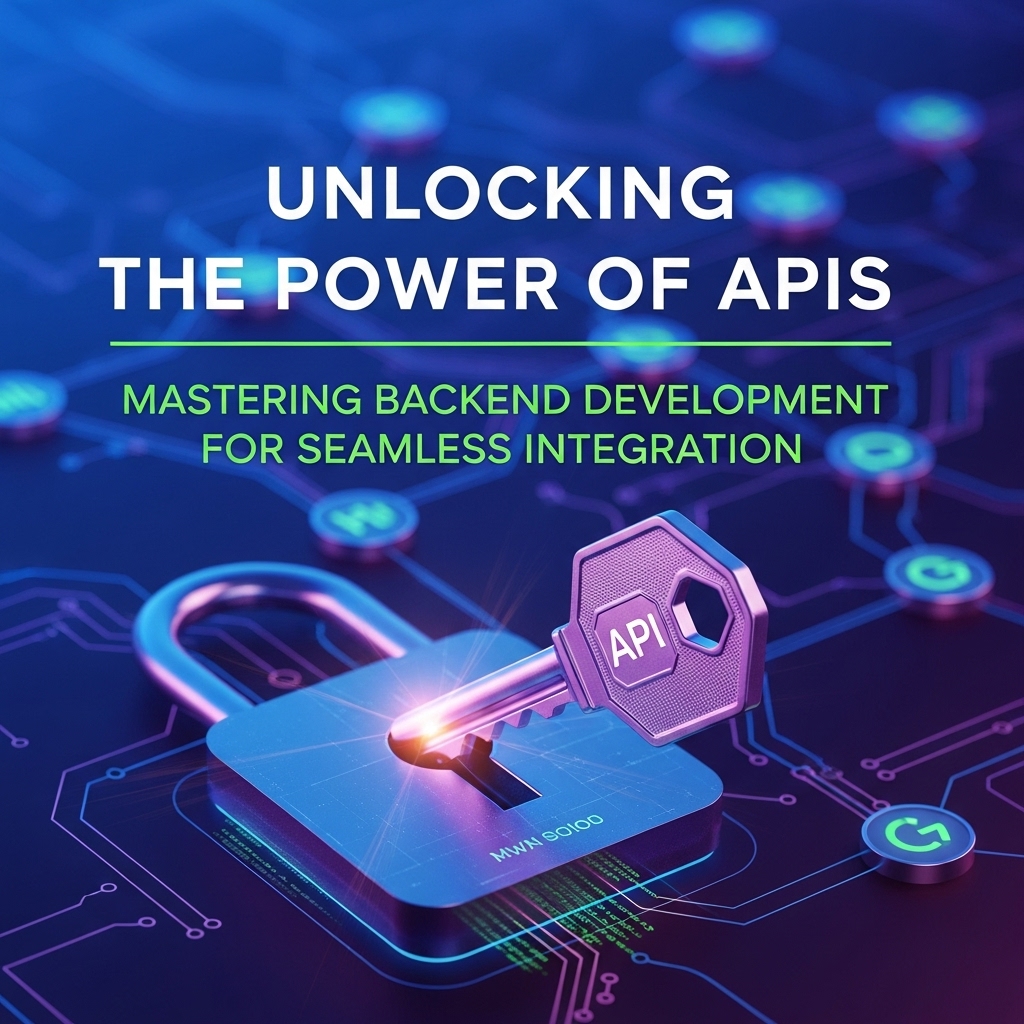
Introduction to APIs and Backend Development
Application Programming Interfaces (APIs) have revolutionized the way applications interact with each other, enabling seamless data exchange and integration. As a crucial component of backend development, mastering APIs is essential for creating robust, scalable, and efficient software systems. In this article, we will delve into the world of APIs, exploring their importance, types, and best practices for backend development. We will also discuss the role of APIs in facilitating integration with third-party services, microservices architecture, and the Internet of Things (IoT).
Understanding API Types and Protocols
There are several types of APIs, each with its own strengths and use cases. The most common types include RESTful APIs (Representational State of Resource), GraphQL APIs, and SOAP (Simple Object Access Protocol) APIs. RESTful APIs are the most widely used, relying on HTTP protocols to manage resources and perform CRUD (Create, Read, Update, Delete) operations. GraphQL APIs, on the other hand, provide more flexibility and query efficiency, while SOAP APIs are often used for enterprise-level applications requiring high security and reliability. Understanding the differences between these API types and protocols is vital for selecting the best approach for your backend development project.
For example, a simple RESTful API for a blog might include endpoints for retrieving a list of posts, creating a new post, and updating an existing post. This could be achieved using HTTP methods such as GET, POST, and PUT, respectively. In contrast, a GraphQL API for the same blog might allow clients to query specific post fields, reducing the amount of data transferred and improving performance.
Designing and Building APIs
Designing and building APIs requires careful consideration of several factors, including API endpoint structure, request and response formats, authentication and authorization, and error handling. A well-designed API should be intuitive, consistent, and easy to use, with clear documentation and examples. API developers should also prioritize security, implementing measures such as encryption, secure authentication protocols, and rate limiting to prevent abuse and protect sensitive data.
A key aspect of API design is choosing the right data format. JSON (JavaScript Object Notation) and XML (Extensible Markup Language) are popular choices, with JSON being the more widely adopted due to its simplicity and ease of use. For instance, a JSON response from a RESTful API might look like this: { "id": 1, "title": "Example Post", "content": "This is an example post" }. This format is easy to read and parse, making it a popular choice for API development.
API Security and Authentication
API security is a critical concern, as APIs often provide access to sensitive data and functionality. To ensure the security of your API, you should implement robust authentication and authorization mechanisms. Common authentication methods include API keys, OAuth, and JWT (JSON Web Tokens). API keys are simple to implement but can be insecure if not properly managed. OAuth provides a more secure and flexible approach, while JWT offers a stateless and compact alternative.
Authorization is also essential, as it determines what actions a client can perform on your API. Role-Based Access Control (RBAC) and Attribute-Based Access Control (ABAC) are popular authorization models, with RBAC being the more widely adopted. For example, an API for a social media platform might use RBAC to restrict access to certain features based on user roles, such as administrator, moderator, or regular user.
API Testing and Deployment
Thorough testing is crucial to ensure your API is reliable, efficient, and secure. You should test your API for functionality, performance, and security, using tools such as Postman, JMeter, or Pytest. Testing should cover various scenarios, including happy paths, error cases, and edge cases. Additionally, you should implement continuous integration and continuous deployment (CI/CD) pipelines to automate testing, building, and deployment of your API.
Deployment options for APIs vary, with cloud platforms such as AWS, Google Cloud, and Azure being popular choices. Containerization using Docker and Kubernetes can also simplify deployment and scaling. For example, a containerized API can be easily deployed to a cloud platform, allowing for automatic scaling and load balancing.
Best Practices for API Development
Following best practices is essential for creating high-quality APIs. These include using meaningful and consistent naming conventions, providing clear and concise documentation, and implementing versioning to manage changes and backwards compatibility. You should also prioritize performance optimization, using techniques such as caching, pagination, and query optimization to reduce latency and improve throughput.
Another important best practice is to follow API design principles, such as the API-first approach, which emphasizes designing the API before implementing the backend. This approach ensures the API is well-designed, intuitive, and meets the requirements of the application. For instance, an API-first approach might involve creating a prototype or mock API to test and refine the design before implementing the backend.
Conclusion and Future of API Development
In conclusion, mastering APIs is essential for backend development, enabling seamless integration with third-party services, microservices architecture, and the Internet of Things (IoT). By understanding API types and protocols, designing and building robust APIs, prioritizing security and authentication, testing and deploying APIs, and following best practices, you can create high-quality APIs that meet the needs of your application and users. As the API landscape continues to evolve, we can expect to see increased adoption of emerging technologies such as serverless architecture, GraphQL, and API marketplaces.
The future of API development holds much promise, with the potential to revolutionize industries and transform the way we interact with technology. As a backend developer, it is essential to stay up-to-date with the latest trends, best practices, and technologies to create innovative and effective APIs that drive business success and user engagement. By unlocking the power of APIs, you can unlock new opportunities for growth, innovation, and success in the world of backend development.
